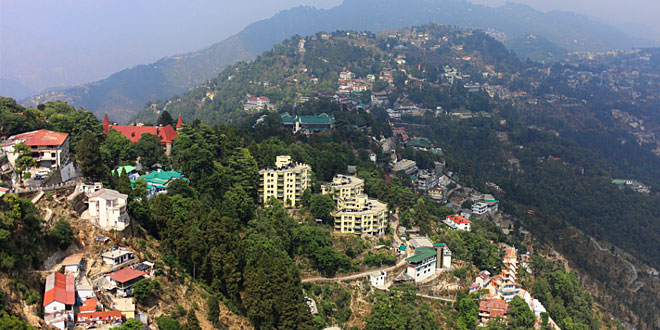Question: Write a short note on the Deccan Plateau.
Answer: The Deccan Plateau is a large plateau in India which covers most of the southern part of the country. It is between three mountain ranges and extends over eight Indian states; in particular the states of Telangana, Maharashtra, Andhra Pradesh, Karnataka, Kerala and Tamil Nadu are on this plateau. The plateau covers 422,000 square kilometers (163,000 sq mi), 43 percent of India’s landmass. The uplands, areas of higher land, make up a triangle nested in the familiar downward-pointing triangle of the Indian sub-continent’s coastline. In the south of India the plateau is mostly over 1,000 meters (3,300 ft) above sea level. In the north it is mostly about 500 meters (1,600 ft) above sea level. The plateau is extremely large and there are many habitats: different ecosystems with different sorts of vegetation, climate, geology and animals. The forests on the plateau are older than the Himalayan mountains.
On the west of the plateau are the Western Ghats and in the east are the Eastern Ghats. These mountain ranges rise from their nearby coastal plains and nearly meet at the southern tip of India. The mountains make the southward-pointing vertex of a triangle. The northern boundary of the triangle is made up by the Satpura Range and Vindhya Range. These northern ranges separate the plateau from the heavily populated riverine plains of northern India.
Question: What are coral polyps? Write in brief.
Answer: Coral polyps are tiny, soft-bodied organisms related to sea anemones and jellyfish. At their base is a hard, protective limestone skeleton called a calicle, which forms the structure of coral reefs. Reefs begin when a polyp attaches itself to a rock on the sea floor, then divides, or buds, into thousands of clones.
Question: What are the three types of plate boundaries? Write their characteristic features.
Answer:
-
- Divergent Boundary: A divergent boundary occurs when two tectonic plates move away from each other. Along these boundaries, lava spews from long fissures and geysers spurt super heated water. Frequent earthquakes strike along the rift. Beneath the rift, magma—molten rock—rises from the mantle. It oozes up into the gap and hardens into solid rock, forming new crust on the torn edges of the plates. Magma from the mantle solidifies into basalt, a dark, dense rock that underlies the ocean floor. Thus at divergent boundaries, oceanic crust, made of basalt, is created.
- Convergent Boundary: When two plates come together, it is known as a convergent boundary. The impact of the two colliding plates buckles the edge of one or both plates up into a rugged mountain range, and sometimes bends the other down into a deep seafloor trench. A chain of volcanoes often forms parallel to the boundary, to the mountain range, and to the trench. Powerful earthquakes shake a wide area on both sides of the boundary.
If one of the colliding plates is topped with oceanic crust, it is forced down into the mantle where it begins to melt. Magma rises into and through the other plate, solidifying into new crust. Magma formed from melting plates solidifies into granite, a light colored, low-density rock that makes up the continents. Thus at convergent boundaries, continental crust, made of granite, is created, and oceanic crust is destroyed. - Transform Boundary: Two plates sliding past each other forms a transform plate boundary. Natural or human-made structures that cross a transform boundary are offset—split into pieces and carried in opposite directions. Rocks that line the boundary are pulverized as the plates grind along, creating a linear fault valley or undersea canyon. As the plates alternately jam and jump against each other, earthquakes rattle through a wide boundary zone. In contrast to convergent and divergent boundaries, no magma is formed. Thus, crust is cracked and broken at transform margins, but is not created or destroyed.
 Class Notes NCERT Solutions for CBSE Students
Class Notes NCERT Solutions for CBSE Students






